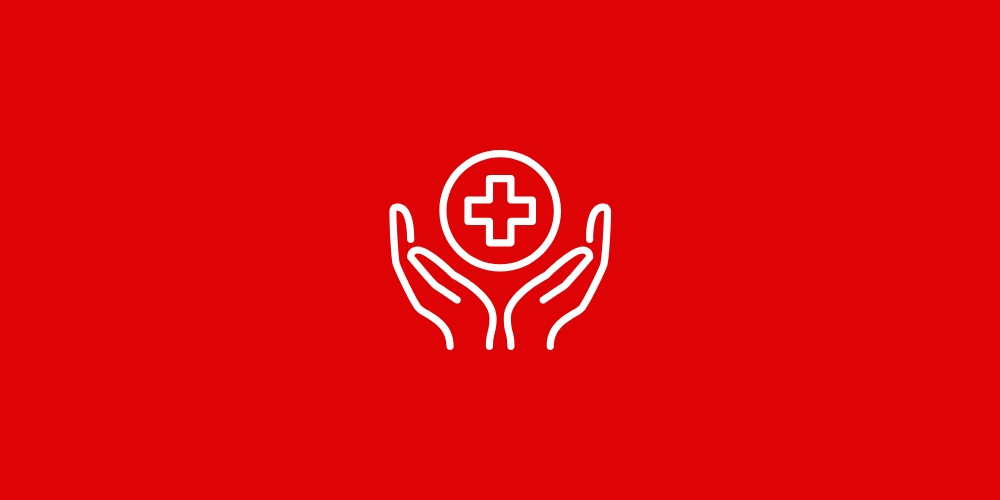Advanced Higher: Abortion
I previously shared an essay plan and explained how I approach essay writing. Another question I am asked is whether you can use the same structure in other areas of the course i.e. Religious Experience or Medical Ethics. I would generally say, absolutely!
Here’s an essay I’ve written on abortion that uses the same pattern – I’ve added heading to show the structure:
“Abortion is immoral.” To what extent do you agree?
Define abortion: Abortion is the termination of a pregnancy, typically before the foetus can survive outside the womb. It can be induced through medical or surgical procedures and is often sought for various reasons, including personal, financial, or health-related concerns.
What’s the issue? The moral status of abortion is highly debated, with discussions focusing on the value of life, the definition of personhood, and the autonomy of pregnant women.
Premise of my essay: This essay examines these central questions to determine whether abortion is immoral. It will explore how moral personhood can be established, whether the foetus has a right to life, and whether a woman’s autonomy overrides any obligations toward the foetus. Ultimately, it will argue that while ethical theories offer important perspectives, the complexity of abortion, particularly in real-life contexts, challenges any definitive moral conclusion.
Section One
Outline the issue: One key issue in the abortion debate is whether and when the foetus attains moral personhood—a status that would grant it moral rights, including the right to life. Pro-life advocates argue that life has intrinsic value from the moment of conception. Biologically, life begins at conception, when a unique human organism with its own DNA is formed. Philosopher Robert P. George contends that “from the zygote stage forward, the embryo is a distinct, unified, self-integrating human organism” and thus should be granted moral consideration.
Strengths: This perspective is reinforced by Christian theology, which emphasises the sanctity of life. Thomas Aquinas’s natural law theory, rooted in Biblical teachings, holds that all human life is sacred because it is created in the image of God (Genesis 1:27). Psalm 139:13-14 states, “For you created my inmost being; you knit me together in my mother’s womb. I praise you because I am fearfully and wonderfully made.” From this view, abortion is seen as a violation of the natural purpose of pregnancy and the moral duty to protect innocent life. Pope John Paul II also declared in Evangelium Vitae that “abortion willed either as an end or a means, is gravely contrary to the moral law.” This reinforces the belief that abortion is inherently immoral regardless of the circumstances.
Weaknesses: However, this view is not shared in all Christian denominations as the Church of Scotland offers a more nuanced position. While it upholds the value of life, it also acknowledges that there are situations where abortion may be morally acceptable. In a 1996 report, the Church stated that “there are circumstances where abortion may be the lesser of two evils, particularly where the life or health of the mother is at serious risk.” This perspective suggests that while life is precious, moral decisions must also consider the well-being and autonomy of the pregnant woman.
Further critique: However, I think the sanctity of life argument is too rigid and overlooks the complexity of real-life situations. While the intrinsic value of life is important, it does not adequately address cases where continuing a pregnancy causes profound suffering. For instance, in cases of severe foetal abnormality or risk to the mother’s life, insisting on the continuation of pregnancy seems to prioritise abstract principles over real human suffering.
Mini conclude: Respecting life should include recognising when preserving it causes more harm than good. Therefore, I believe that a more compassionate view would allow for abortion in circumstances where it alleviates undue suffering.
Section Two
Outline the issue: Pro-choice advocates challenge the assumption that biological life is equivalent to moral personhood. Philosopher Mary Anne Warren argues that personhood is defined by traits such as consciousness, reasoning, and the capacity for self-awareness. Since a foetus lacks these traits in the early stages of development, she contends it does not have the same moral status as a person and therefore does not possess an inherent right to life. This distinction between biological and moral personhood highlights why the morality of abortion remains contested.
Strengths: I find Warren’s argument compelling because it focuses on qualities that define meaningful human life rather than mere biological existence. A fertilised egg or early-stage embryo cannot think, feel, or engage with the world. While potential for life is significant, it is not equivalent to the moral claims of an actual person. This distinction is crucial when weighing the rights of the pregnant woman against the potential life of the foetus. Prioritising the woman’s autonomy in these situations respects her existing personhood and capacity for moral decision-making.
Weaknesses: Some people have criticized Warren for being too narrow and potentially excluding individuals with disabilities or those in a vegetative state, leading to ethical concerns as we clearly have a duty to protect the vulnerable. But the question still remains of whether the need to protect the foetus is ever more important than protecting a woman’s autonomy.
Further critique: Judith Jarvis Thomson’s famous “violinist analogy” further supports this position. In her analogy, being forced to sustain the life of a violinist against one’s will mirrors the experience of a woman compelled to maintain a pregnancy. While it might be kind to do so, it is not a moral obligation. Thomson’s argument asserts that even if the foetus is granted personhood, a woman’s right to bodily autonomy may still take precedence.
Mini conclude: I think this analogy is particularly persuasive because it highlights the ethical importance of consent. Requiring a woman to carry a pregnancy against her will reduces her to a mere vessel, undermining her autonomy and dignity. Critics argue that a foetus is not a mere stranger like the violinist, but even within familial relationships, we do not typically require one person to sacrifice their bodily autonomy to sustain another’s life. The same principle should apply to pregnancy. Furthermore, as Judith Jarvis Thomson suggests, “The right to life does not include the right to use another person’s body.” This highlights a crucial contradiction in the pro-life stance: while arguing that all life has value, it simultaneously undermines a woman’s right to autonomous moral decisions.
Section Three
Outline the issue: An additional concern is the inconsistency in UK law, which permits abortion up to 24 weeks for “normal” pregnancies but allows later-term abortions if the foetus has a disability. Critics, including disability rights activist Heidi Crowther, argue that this distinction devalues the lives of disabled people. Crowther states, “The law tells me and others with disabilities that our lives are worth less than others.” This inconsistency challenges the notion that all human life is equally valuable and raises questions about whether the law truly upholds equal dignity for all individuals.
Strengths: This concern is supported by the Christian belief in the inherent value of all people, regardless of ability or stage of development. The Bible teaches that every human being is made in the image of God (Genesis 1:27) and is therefore equally worthy of respect. From this perspective, allowing abortion on the grounds of disability implies that some lives are less worth protecting than others, which directly contradicts the idea of universal human dignity. Furthermore, Psalm 82:3 instructs believers to “defend the cause of the weak and fatherless; maintain the rights of the poor and oppressed.” This could be interpreted as a call to protect the most vulnerable—including unborn children with disabilities—from discrimination.
Weaknesses: However, critics argue that the legal distinction is not about valuing disabled lives less, but about acknowledging the unique challenges and potential suffering that may arise in cases of serious foetal abnormality. Later-term abortions in these cases are not taken lightly but often follow difficult diagnoses and heart breaking decisions. In such scenarios, the intention is not to discriminate but to prevent undue suffering for both the child and the family. Moreover, refusing to allow later abortions in such cases may result in greater harm, especially if the child’s life expectancy is extremely limited or the condition causes severe pain.
Further critique: From a utilitarian perspective, laws must aim to reduce suffering and promote overall well-being. Allowing abortion in cases of severe disability might be justified if it prevents prolonged pain or psychological trauma for the parents and child. Philosopher Peter Singer, for example, argues that the moral status of a being is tied to their capacity to suffer and experience life. If a foetus will be born into a life of intense suffering, or will die shortly after birth, then the compassionate choice may be to allow abortion. However, this utilitarian approach can also seem cold and impersonal. It risks creating a society where the worth of a life is measured by its perceived “quality,” which could lead to dangerous attitudes toward disability more broadly.
Mini conclude: While I agree that the law must be scrutinised to ensure it does not discriminate against disabled people, I also think we need to recognise the emotional and moral complexity of these decisions. Instead of removing the option for later-term abortions, we should ensure that such decisions are made with compassion, support, and dignity for all involved. The real issue is not whether abortion is ever justified, but how we uphold respect for all lives—born and unborn—without reducing moral questions to abstract legal categories.
Conclusion: Is abortion immoral?
To answer this question, I have identified three main points of clash that must be answered:
- Is biological life the same as moral personhood?
No. While life begins at conception, moral personhood involves traits like consciousness, reasoning, and self-awareness. These emerge only later in pregnancy. Therefore, the early-stage foetus does not hold the same moral status as a person, and this weakens the claim that abortion is always immoral. - Does the foetus’s right to life override the woman’s autonomy?
In most cases, no. Autonomy is a central value in both liberal ethics and Kantian thought. Even if the foetus has some moral worth, it should not automatically override the rights of the pregnant woman, especially when she faces serious risks or hardships. - Can abortion be justified based on consequences?
Yes, particularly when it prevents significant harm or suffering. Utilitarian reasoning highlights the importance of context and the impact of unwanted pregnancies on all involved. When considered carefully, abortion can be the more compassionate and moral option.
Final view: Abortion is not inherently immoral. Its morality depends on the context, including the development of the foetus, the rights and wellbeing of the pregnant woman, and the broader social and emotional consequences. Ethical theories can help guide us, but they cannot replace personal judgment in complex real-life situations. Ultimately, I believe abortion can be a morally justifiable choice—especially when it is grounded in compassion, respect for autonomy, and a commitment to minimising suffering.
If you’d like some help learning how to apply this structure to the other parts of the course, I’m available for one-off online tutoring sessions – just drop me an email to LauraEmily85@gmail.com



